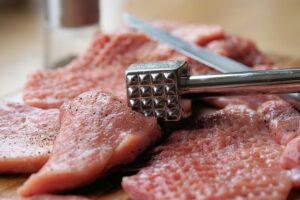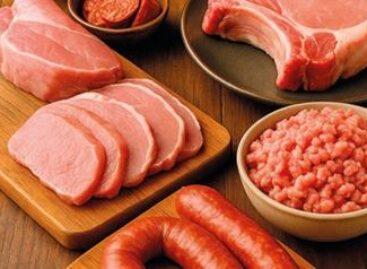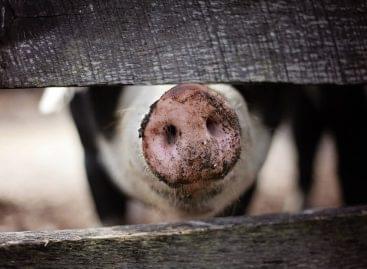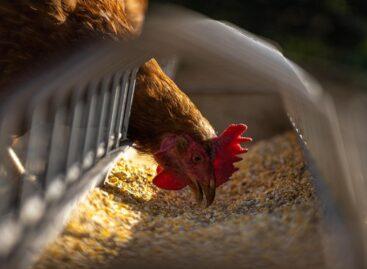Pork sector first half of 2025: increasing slaughter, shrinking Hungarian exports
The volume and number of pig slaughters in the EU increased in the first six months of 2025, and in Hungary the growth was even faster than the EU average. However, exports fell by 8.5 percent due to animal health restrictions that came into effect in third country markets. The domestic meat industry is responding by improving biosecurity, animal welfare and quality, while the return to Asian markets has become a key issue – writes Agrárszektor.
EU trends, domestic dynamics
 In the first half of 2025, the weight of pork slaughtered in the European Union increased by 3.5 percent and the number of pieces by 1.9 percent compared to the same period of the previous year. The greater weight increase indicates that the average slaughter weight increased, which indicates improved production efficiency. In Hungary, the slaughter weight increased by 5 percent and the number of pieces by 3.6 percent – the domestic performance is therefore also considered lively in the regional field.
In the first half of 2025, the weight of pork slaughtered in the European Union increased by 3.5 percent and the number of pieces by 1.9 percent compared to the same period of the previous year. The greater weight increase indicates that the average slaughter weight increased, which indicates improved production efficiency. In Hungary, the slaughter weight increased by 5 percent and the number of pieces by 3.6 percent – the domestic performance is therefore also considered lively in the regional field.
While EU exports remained flat overall, Hungarian exports decreased by 8.5 percent. According to Tibor Hollósy, deputy managing director of Kometa 99 Zrt., the primary reason for the decline is not competitiveness, but animal health: due to foot-and-mouth disease and African swine fever, several third countries – such as Japan, South Korea and Vietnam – temporarily closed their markets to Hungarian products. Sales within the EU remained stable, partially compensating for the loss, but the speedy restoration of Asian relations is decisive for the future of the sector.
Biosecurity and animal welfare: competitive advantage from cost
The focus of domestic slaughterhouses is on minimizing animal health risks and tightening animal welfare protocols. Kometa’s practice clearly demonstrates the level of industry standards: the origin of incoming shipments is checked before they arrive at the farm, complete vehicle and wheel disinfection is mandatory upon entry, and loading is accompanied by strict inspection. In the summer months, live animals are loaded at night in order to reduce heat stress, and rest before slaughter takes place in an air-conditioned environment equipped with a drinker and shower. Stunning is done in groups with a carbon dioxide-oxygen mixture, which is gentler, reduces stress and the occurrence of bruising that deteriorates meat quality. The almost complete elimination of spot bruising is a quality advantage, especially for the export of ham products.
Quality and health aspects are becoming stronger in domestic consumer trends; the market is increasingly accepting of technological compromises. The stricter animal welfare and hygiene protocols are not campaign-like interventions, but the results of development programs that have been ongoing for years. These investments represent costs in the short term, but in the medium term they are differentiating factors in both the domestic and export markets.
Price situation: lighter consumer basket, more difficult producer math
Hungarian live pig prices have recently been 10–11 percent below last year’s level. This may partially improve the profitability of processors, but may cause liquidity pressure on the producer side, especially given the persistently high base of feed and energy costs. The key to the balance of the chain as a whole is to allow higher value-added items to enter the market again by reopening foreign market channels.
Industry players are working with authorities and interest groups to restore exports to third countries as soon as possible. The short-term goal is to meet the necessary certification, monitoring and monitoring requirements to lift restrictions; the medium-term strategy is to further strengthen biosecurity and animal welfare, as well as brand positioning based on quality and traceability. The increase in domestic slaughter numbers is a good basis, but reaching Asian markets again is essential to put the sector on a growth path.
Related news
Domestic meat industry in a market turmoil
🎧 Hallgasd a cikket: Lejátszás Szünet Folytatás Leállítás Nyelv: Auto…
Read more >The price of slaughter pigs has decreased in Hungary and in the EU
🎧 Hallgasd a cikket: Lejátszás Szünet Folytatás Leállítás Nyelv: Auto…
Read more >Institute of Agricultural Economics: poultry meat exports increased, pork meat exports decreased
🎧 Hallgasd a cikket: Lejátszás Szünet Folytatás Leállítás Nyelv: Auto…
Read more >Related news
Scientific compass in logistics: Logistics Yearbook 2026 published
🎧 Hallgasd a cikket: Lejátszás Szünet Folytatás Leállítás Nyelv: Auto…
Read more >(HU) A nap mondása
🎧 Hallgasd a cikket: Lejátszás Szünet Folytatás Leállítás Nyelv: Auto…
Read more >(HU) A nap mondása
🎧 Hallgasd a cikket: Lejátszás Szünet Folytatás Leállítás Nyelv: Auto…
Read more >






